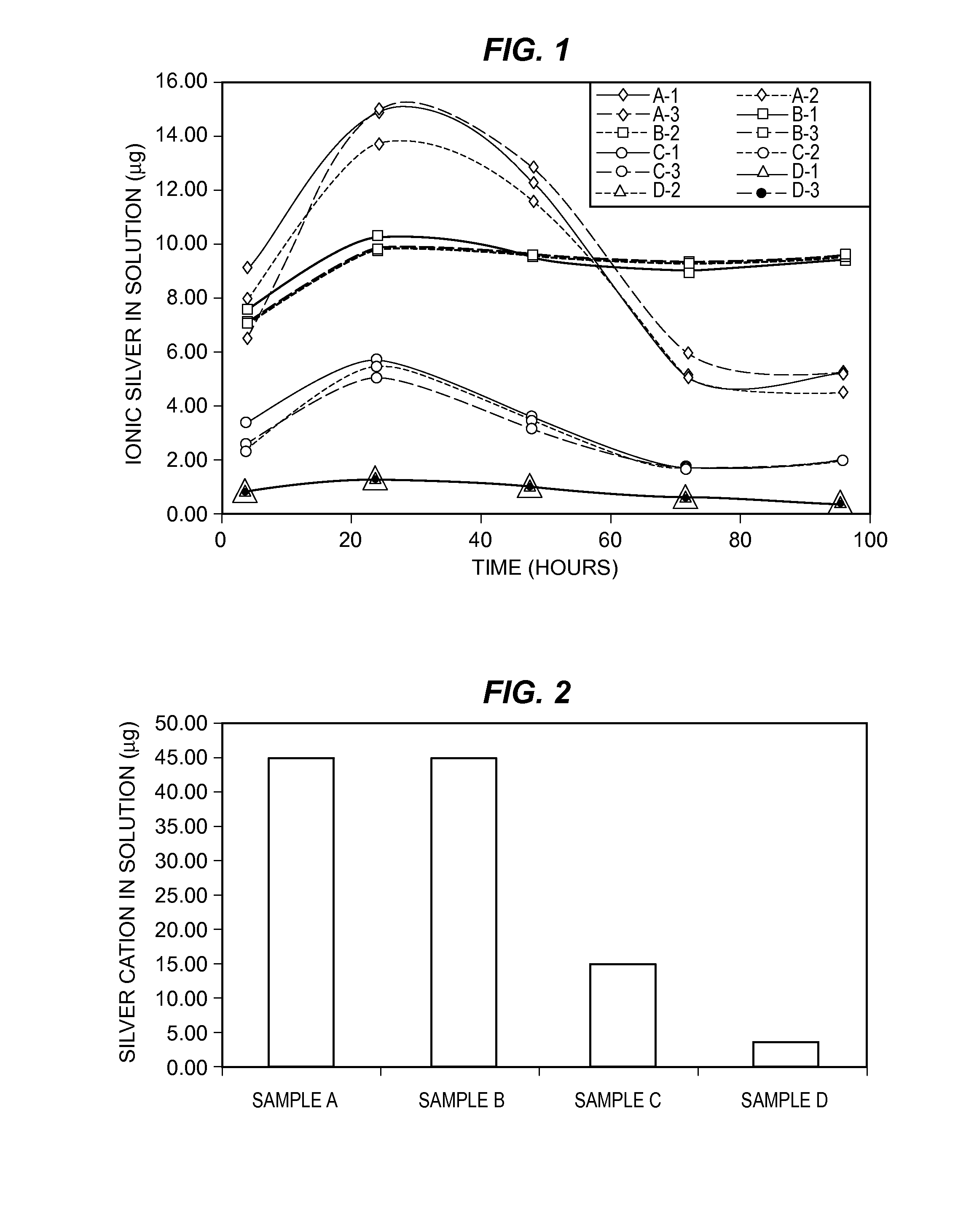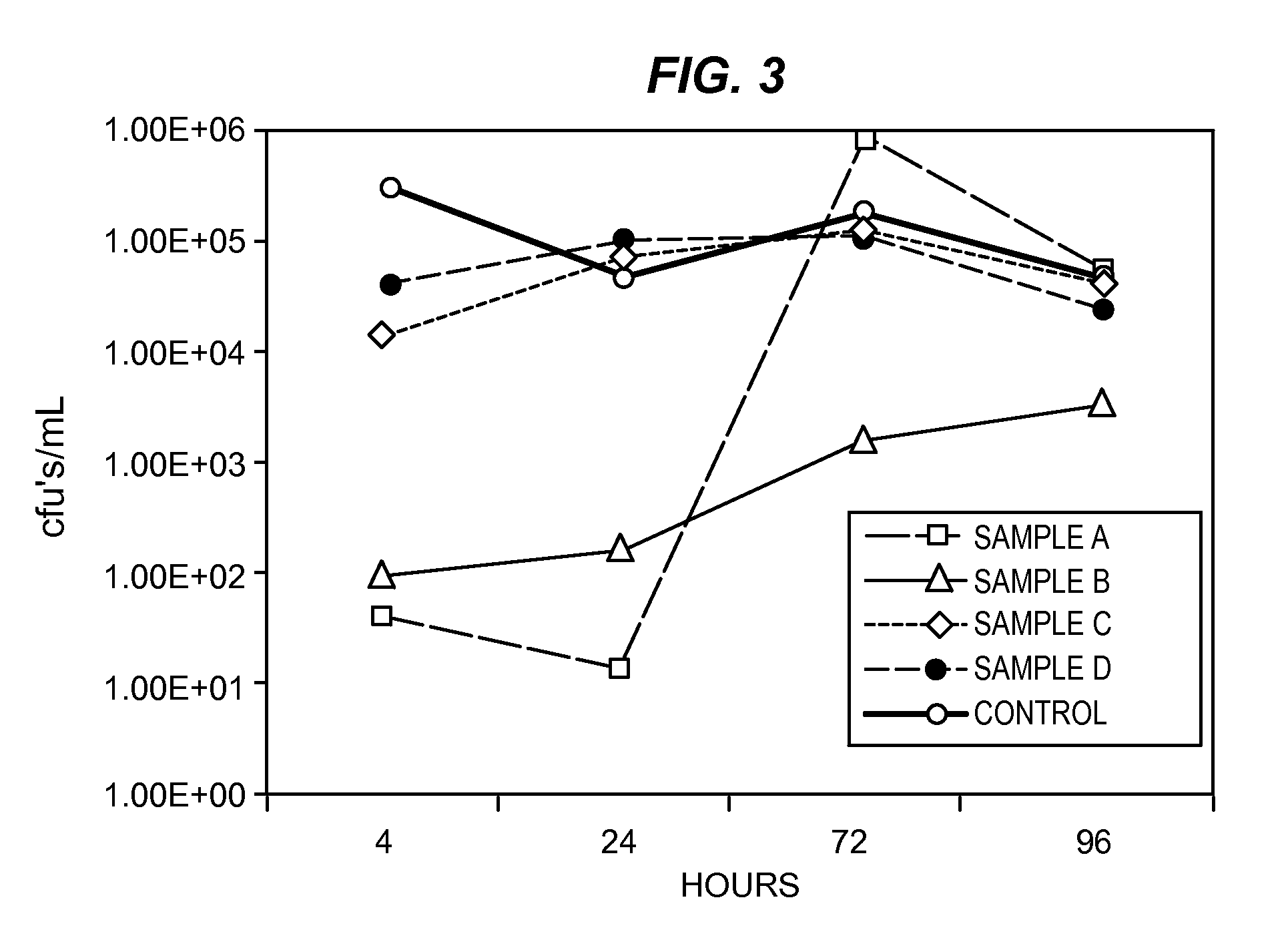Methods for making antimicrobial resins
- Summary
- Abstract
- Description
- Claims
- Application Information
AI Technical Summary
Benefits of technology
Problems solved by technology
Method used
Image
Examples
example 1
Preparation of Antimicrobial Resins on Polycarbonate Surfaces
[0068]An antimicrobial resin was prepared by combining SR 610 polyethylene glycol diacrylate (23.63 weight %), CD9038 ethoxylated bisphenol A diacrylate (28.35 weight %), acrylic acid (9.45 weight %), dimethyl acrylamide (9.45 weight %), SR 238 hexanediol diacrylate (9.45 weight %), 2-hydroxyethyl methacrylate (9.45 weight %), stearic acid (0.50 weight %), and silver sulfadiazine (5.00 weight %). IRGACURE® 651 α,α-dimethoxy-α-phenylacetophenone initiator (4.72 weight %) was added, and the resulting mixture was applied to a polycarbonate surface. The polycarbonate surface was then exposed to a UV light source (approximately 0.5 J / cm2) to cure the mixture, thereby forming a coating comprising an antimicrobial resin on the polycarbonate surface. The cured antimicrobial resin adhered strongly to the polycarbonate surface.
ComponentWeight %FunctionSupplierIRGACURE ® 651 (α,α-4.72InitiatorCibadimethoxy-α-phenylacetophenone)SR 610...
example 2
Antimicrobial Activity of Radiation-Cured Resins
[0071]The antimicrobial resin-carrying polycarbonate surface prepared in Example 1 was tested to determine its ability to inhibit growth of microorganisms. Polycarbonate surfaces carrying coatings comprising antimicrobial resins not in accordance with the disclosure (see Example 1) and an uncoated polycarbonate surface were also tested. A suspension of Staphylococcus aureus (S. aureus) was grown in tryptic soy broth for 18-24 hours. The suspension was then diluted in saline to 6.4×105 colony-forming units per mL (cfu / mL). Tubes containing 5 mL saline were inoculated with 0.1 mL (6.4×104 cfu) of the suspension. Samples A-D and an uncoated polycarbonate surface were aseptically added to the tubes, which were incubated at 20-25° C. for 48 hours. The samples then were plated in tryptic soy agar in triplicate and incubated at 30-35° C. for 48 hours. After this time, growth of S. aureus was measured, as shown in FIG. 3. The antimicrobial res...
PUM
| Property | Measurement | Unit |
|---|---|---|
| Percent by mass | aaaaa | aaaaa |
| Percent by mass | aaaaa | aaaaa |
| Percent by mass | aaaaa | aaaaa |
Abstract
Description
Claims
Application Information
 Login to View More
Login to View More - R&D Engineer
- R&D Manager
- IP Professional
- Industry Leading Data Capabilities
- Powerful AI technology
- Patent DNA Extraction
Browse by: Latest US Patents, China's latest patents, Technical Efficacy Thesaurus, Application Domain, Technology Topic, Popular Technical Reports.
© 2024 PatSnap. All rights reserved.Legal|Privacy policy|Modern Slavery Act Transparency Statement|Sitemap|About US| Contact US: help@patsnap.com









